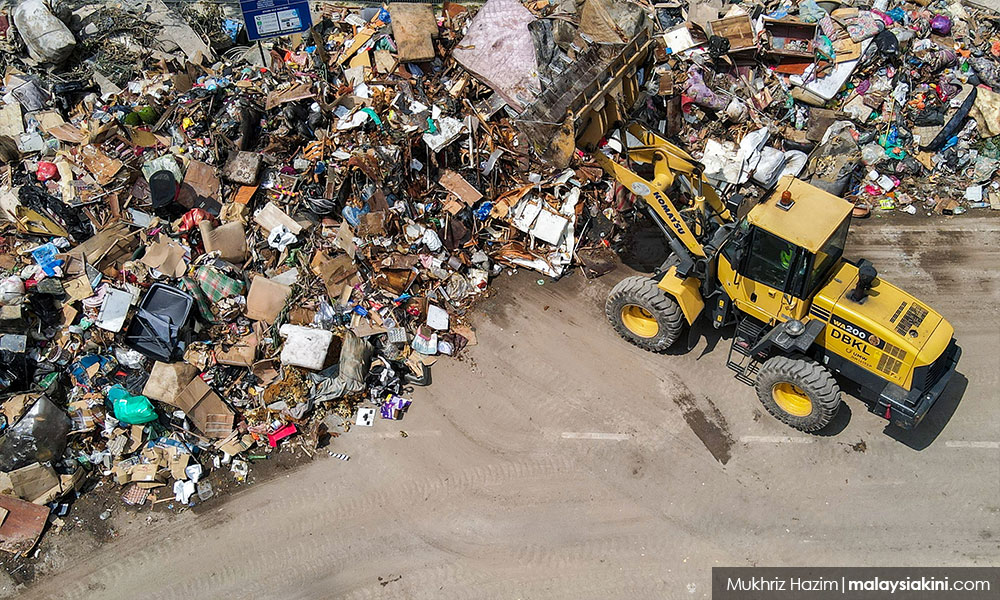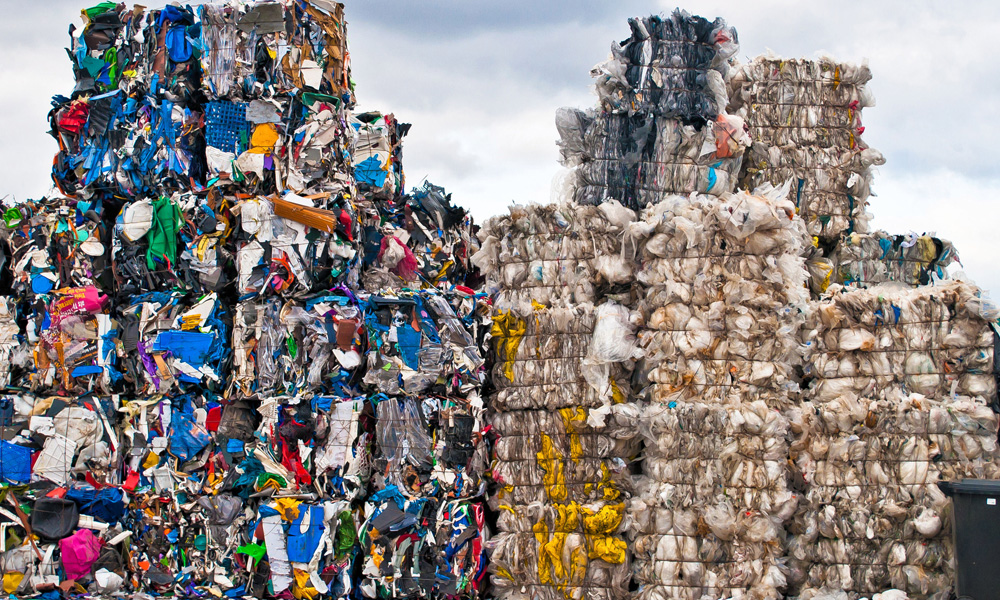COMMENT | The federal government had set an unambitious target to achieve a national recycling rate (NRR) of 40 percent in the year 2025. The NRR reached 31.52 percent in 2021 compared to 30.67 percent in 2020.
At this rate, the NRR will hover around 35 percent in 2025. This is a disappointing outcome when coupled with the fact that national recycling programmes were started in 1993.
Solid waste management is under the purview of the Housing and Local Government Ministry. The regulatory body is the Solid Waste Management Department. Meanwhile, the executing government-linked companies (GLCs) are SWCorp, Alam Flora Sdn Bhd and KDEB Waste Management Sdn Bhd.
Previously, ministers, bureaucrats and GLC directors with the six-figure salary per annum repeatedly blamed the people's mentality for the low NRR to deflect their inability to solve public problems.
Ministers, bureaucrats and GLC directors do not have any moral high ground to blame people for their inability to fully utilise the policymaking tools available to improve the recycling rate.
Private profits thrive under public ignorance
Firstly, consumers lack the guidance to recycle or dispose of goods at the end of their lifespan and their packaging. Manufacturers produce millions of consumer goods and packaging. The majority of these goods and their packaging are made with a combination of recyclable and non-recyclable parts.
The manufacturers’ emphasis on profit before planet has no natural motivation to improve their products environmental footprint. Globally, manufacturers only improve their products' environmental footprint when under intense pressure from green consumerism or government regulations.
As an example, an instant noodle cup is made up of aluminium foil for the seasoning packet and the top cover, a rigid plastic cup and fork as well as paper for product information. Most people assume aluminium foil can be recycled in the aluminium bin. However, aluminium and silver foil are non-recyclable. The rigid plastic cup and spoon must be cleaned to remove food decontamination before recycling.
Another example is empty tissue boxes. Tissue boxes are made of cardboard with some flimsy transparent plastic flap around the dispenser hole. The plastic flap needs to be removed before the box is sent for recycling.
However, 99 percent of Malaysians do not have the knowledge to dismantle and separate multi-material consumer goods before recycling. Eventually, the whole item is dumped into landfill-bound trash bins. Hundreds of tonnes of landfill-bound waste could have been recycled if it was separated correctly.
Secondly, manufacturers and big businesses are systematically misleading environmental conscious consumers on a daily basis to consume products assuming those items are recyclable. One such example is papers cups and plates that are handed out by fast-food chain outlets.
About 20 years ago, fast-food chains provided dine-in customers with reusable plates and cups. This was replaced with paper plates and cups. Meanwhile, high-end coffee chains replaced reusable mugs with disposable cups.
These were methods done to reduce and eliminate workers like table cleaners and dishwashers respectively. These labour cost-saving tactics never trickled down as higher wages for existing workers nor cheaper goods for people. However, the overall society continues to drown under piles of trash.
The majority of people tend to feel good after throwing those paper cups and plates into paper recycling bins. Unknown to them, the inner part of paper plates and cups are coated with plastic. The plastic-lined paper cups and plates cannot be recycled but can contaminate the process of recycling paper.
Mixing non-recyclable waste with recyclable materials reduces the effective recycling rate (ERR). Although 31.52 percent of waste is sent to the recycling centre, that does not mean 31.52 percent is actually recycled. Certain non-recyclable plastic such as flimsy wrappers and plastic bags can damaged recycling equipment. Meanwhile, pizza boxes and paper straws with food contamination cannot be recycled.
The overall ERR may actually be far lower than the NRR. Big businesses are knowingly withholding from full and proper disclosure to mislead people into assuming they had made environmentally responsible consumption.
Thirdly, people are making purchases without knowing the amount of non-recyclable material inside the enclosed packaging. Manufacturers are steadily reducing the proportion of consumed goods without decreasing the size of external packing by introducing extra internal packing.
One such example is processed food packaging such as biscuits and crackers. About 10 years ago, consumers could eat the biscuits directly after opening the main packaging. But five years ago, the biscuits were repackaged into smaller packs within the main packaging. Today, there are large transparent plastic trays that hold the small packs in the main package.
The consumer will not realise the proportion of unneeded packaging until they open the external packaging at home. The so-called “free market” has a free reign to trick consumers into buying things without full disclosure. Private profit thrives by preying on public ignorance through unethical business practices.
Recycling guide label
The government must introduce a recycling guide label in both Bahasa Malaysia and English. The label must provide instructions on steps to separate, recycle, and dispose of the items and their packaging. People do not have the time to search so clear instruction is necessary to improve recycling at the source.
A recycling guide label ensures higher ERR by minimising contamination at the source of separation. It will provide higher disclosure to consumers about their waste impact before the purchase.
A guide label will put pressure on the revenue for manufacturers with wasteful practices. Subsequently, manufacturers will design environmentally friendly goods and packaging.
Moving forward
There are existing federal laws and regulations that allow the government to enforce such labelling onto consumer goods. However, these laws are not under the purview of the Housing and Local Government Ministry. Regulations and standards for labels such as for food, cosmetics and electronics are fragmented across multiple ministries such as the Health Ministry and the Domestic Trade and Consumer Affairs Ministry.
Henceforth, the recycling guide label requires multi-ministry executive powers for execution. As complex as it sounds, it merely requires commitment from the cabinet. Malaysia could achieve an NRR of 50 percent by 2025 through implementing the recycling guide label. The benefits of a higher recycling rate are well known.
The fundamental question to raise is if there's the political will for the execution of the recycling guide label to in turn raise the recycling rate.
SHARAN RAJ is a human rights activist, environmentalist, and infrastructure policy analyst.
The views expressed here are those of the author/contributor and do not necessarily represent the views of Malaysiakini.




